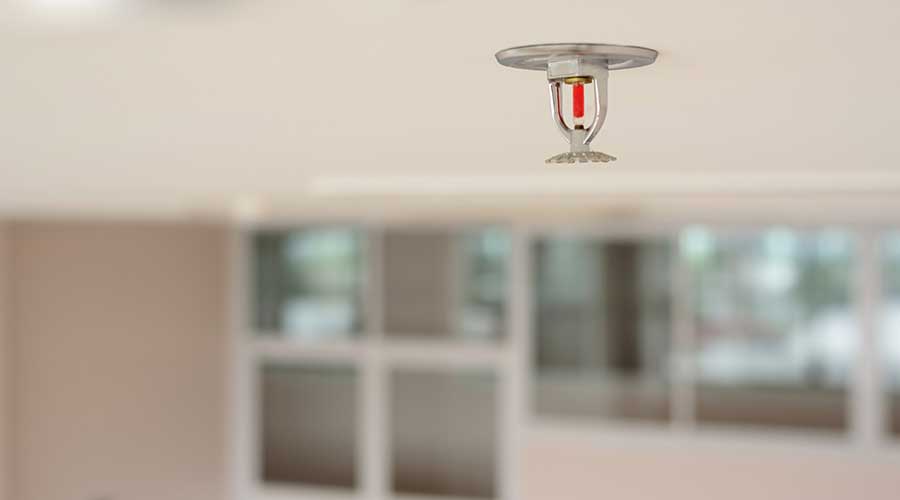Note: This is part two of a two-part article. Read part one here.
Fire life safety is one of the most high-pressure and critical responsibilities of healthcare facility management, and there is no room for error. Managers must do everything in their power to keep patients, staff and visitors safe.
To achieve this goal and prevent fires from striking facilities, managers can take steps to ensure their facilities are in compliance with applicable codes and standards. But they do not need to strive alone for compliance. They have resources and strategies at their disposal to help and support them.
Finding a partner. “Facility directors frequently work with the safety officer for the hospital,” says Douglas King, vice president and national healthcare sector leader for Project Management Advisors, a national real estate consulting firm. “Usually, the safety officer is charged with overall facility compliance with the Joint Commission and CMS. The Joint Commission in particular takes in not only fire life safety but also operational challenges. The safety officer gets into all forms of safety within the healthcare organization.
“The job of the safety officer is to be the external face, to face the external world when it deals with compliance. When you're working in compliance situations, how you deliver the message is sometimes as important as what the message is. The facility director shoulders a lot of responsibility for facility physical compliance, and they need that support, particularly with the safety officer.”
Drawing on drawings. “The first step is to maintain an up-to-date set of fire life safety drawings,” King says. “In every facility project, you will have two or three or four drawings that outline the fire life safety requirements for that project. The savvy facility manager will take that information and create and maintain what one might call a master fire life safety set of drawings.
“It should be basically a composite of all the materials from a variety of projects that are going on. That's really key because the master life safety drawings become a roadmap for doing internal due diligence and inspecting to maintain the facility. It becomes a graphic roadmap, and if it is not up to date or it is not accurate, then your compliance program suffers.”
Relying on training. “The facility director should invest in sending their staff to occasional training programs so they can do their own internal reviews,” King says. “Over time, the codes that people can be trained in would be: NFPA 101, which is life safety; NFPA 99, which is going to cover medical equipment and other elements of the hospital and their requirements; NFPA 72, which is fire alarm; and then NFPA 13, which covers sprinklering. If one got training in those four areas, they would have superpowers. That would allow the facility to have their own process for inspection.”
Making corrections. “Maintain an ongoing plan of correction program,” he says. “I recently did a walkthrough at a facility where they had two interim facility directors, each one for about a year and a half. They didn't have anything documented in the previous three to four years in the facility. We had to resurrect a program that once existed.
“If you put things in that for corrections, like IT wiring that needs firestopping, you can use that as defense if someone points that out as a deficiency. 'We’ve got that covered. We're in the process of doing that.’ You're showing proactive compliance.”
Understanding occupancies. “What we find these days is so many activities in a healthcare facility are occurring on an outpatient basis,” King says. “We're able to change the occupancy from institutional to business in portions of a facility, which actually reduces the amount of due diligence and the number of items to be scrutinized when getting ready for inspection. It's in a facility’s interest to understand the different occupancies within their facility and what those requirements would be for compliance.”
Building relationships. “Get to know local and state regulators as resources and not as adversaries,” he says. “The first time you meet with the building department or state department of public health person, it's best that the first time you go to them isn't with a problem. Instead, just make them aware of who you are. Let them know that you're obviously interested in a good relationship and being a resource to them.
“They have to do their job of making sure that the healthcare facility is in compliance. With the fire marshal, it’s particularly important because they usually own the fire trucks that are going to come to the facility. So having them knowledgeable about the facility is really helpful.”
Dan Hounsell is senior editor of the facilities market. He has more than 30 years of experience writing about facilities maintenance, engineering and management.

 UF Health Hospitals Rely on Green Globes to Realize Their Full Potential
UF Health Hospitals Rely on Green Globes to Realize Their Full Potential How Healthcare Facilities Can Be Truly Disaster-Resilient
How Healthcare Facilities Can Be Truly Disaster-Resilient TriasMD Breaks Ground on DISC Surgery Center for San Fernando Valley
TriasMD Breaks Ground on DISC Surgery Center for San Fernando Valley Bigfork Valley Hospital Falls Victim to Data Breach
Bigfork Valley Hospital Falls Victim to Data Breach AI-Driven Facilities: Strategic Planning and Cost Management
AI-Driven Facilities: Strategic Planning and Cost Management